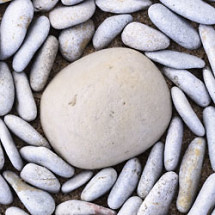Uncategorized
Elsa Maxwell (CIEE) interview Part 2
In the first part of the interview, Elsa introduced us to CIEE: the organization, her role, and how and why she has embedded Personal Leadership in the program. She gave us further insight into faculty perspectives and how they use the book.
In the second part of this interview, Elsa discusses how they position PL in their organization, the question of intercultural leadership and the place of PL in the world.
JR: What is the evaluation process at CIEE and have you made any adjustments based on student evaluations?
EM: We have an overarching evaluation. One thing that comes up is that PL shouldn’t be at the end of the course. We have been positioning it at the end, after the classical theory and simulations. But they see it as an anchor they want to have access to earlier in the course. So we see this as a potential “re-do” in the course in 2018.
In addition, I’ve taught PL with male and female students and sometimes we think the males might not want to get on board to the PL methodology. But last semester the men really engaged with the PL doing multiple journal entries on their vision statement. It was exciting to see how focusing on the practices, Engaging Ambiguity, Cultivating Stillness—these are areas that we don’t often pay attention to and observe or witness (I like that word a lot). I think it opens up spaces of inquiry that can help us detach from certain experiences. Also not to feel shame associated with living in another culture as it’s an emotionally intense experience with the language learning and feeling incompetent. I think a lot of students are hard on themselves.
JR. It’s giving those emotions a place to call home that is neutral and recognized. I think this is key with the way the world is changing right now.
Where do you see the future of PL in your organization, and for yourself with PL?
EM: Within the organization, I think this idea of “Leading from Within” is really necessary right now. Oftentimes Leadership is really thought of as leading others, but what PL offers is the reframing, or rerouting ourselves and makes us realize that we need to step back ask ourselves how are we leading, how do we communicate with others? So I think PL is a key pillar in our course and as I said before we can ask ourselves “can we leverage it in in a better way?” throughout the semester instead of at the end.
Our faculty has also gone through the training and they find it really valuable. We work in a world that is stressful and demanding filled with situations where people may react emotionally. I think for many of our senior leaders they see their PL training as a way to step back and analyse the situations that we’re living in as frameworks for that.
Also we are living in a world of polarization, especially in the US, with a lot more distancing and distrust. I think PL can help us shift our emotions and at least be aware of what they are and be conscious of our feelings right now.
One of the questions that comes up for me is how does PL relate to other leadership frameworks out there thinking about Daniel Golman, Emotional Intelligence, the Harvard Business Review-- how do they or could they complement each other? What could the next step be?
Also, where does culture fit into this? I think the framework could be more explicit in its ties to the intercultural world. I might miss this in the CMD? It brilliantly focuses on ambiguity and key pieces of intercultural communication, but could assume the connection to IC in a way that isn’t transparent for everyone.
Could PL say this is the marriage of leadership and culture? There aren’t many books on intercultural leadership. How could PL position itself on that global greater scale?
Where can we build the bridges to the leadership and culture world?
And how to distinguish the PL from other leadership frameworks?
JT: We could make that a Question to our PL Community.
That’s what the newsletter’s all about.
Note: Since this interview, Elsa has left CIEE for other opportunities; you can learn more about CIEE's work at CIEE.org.






Social